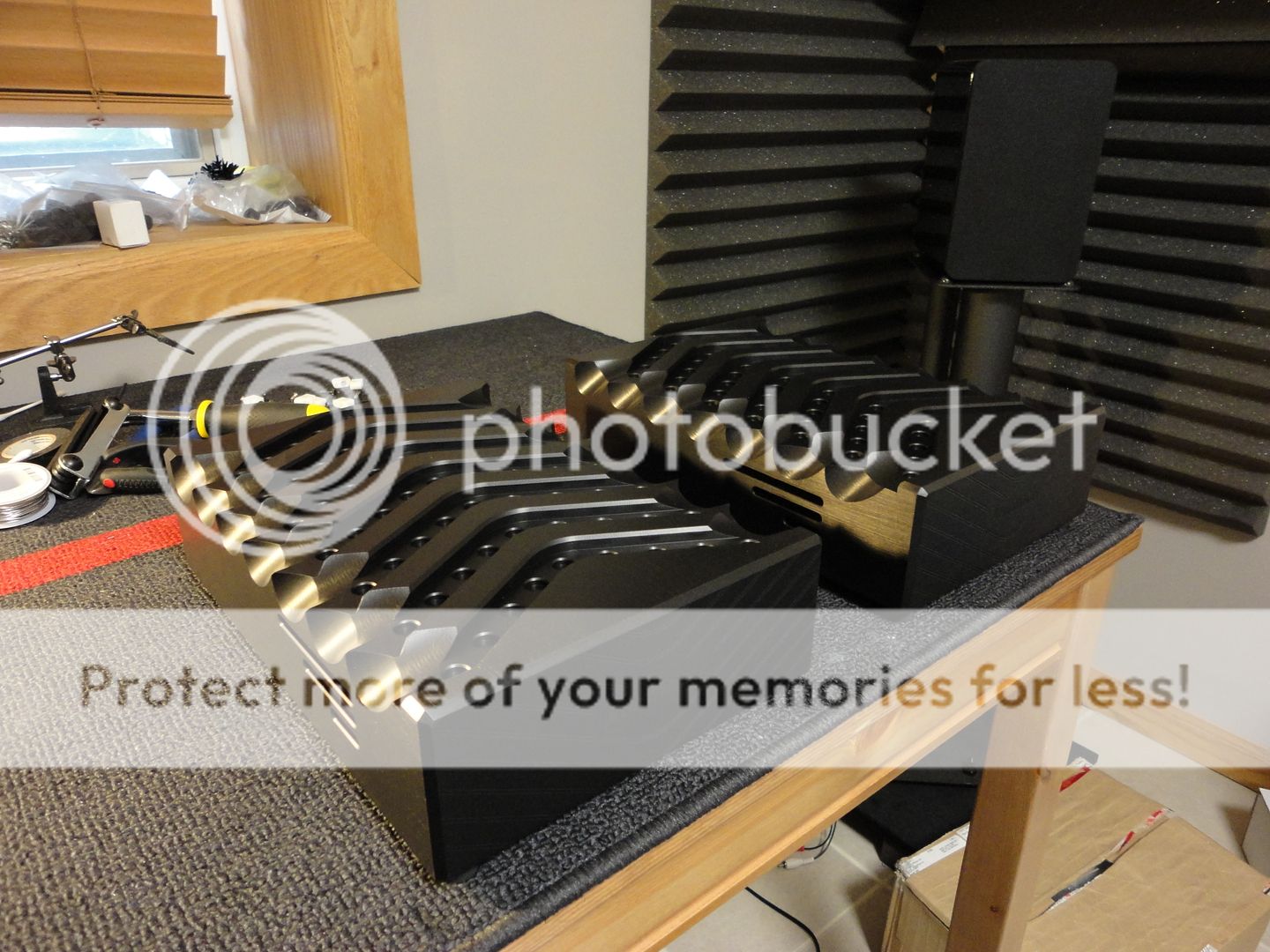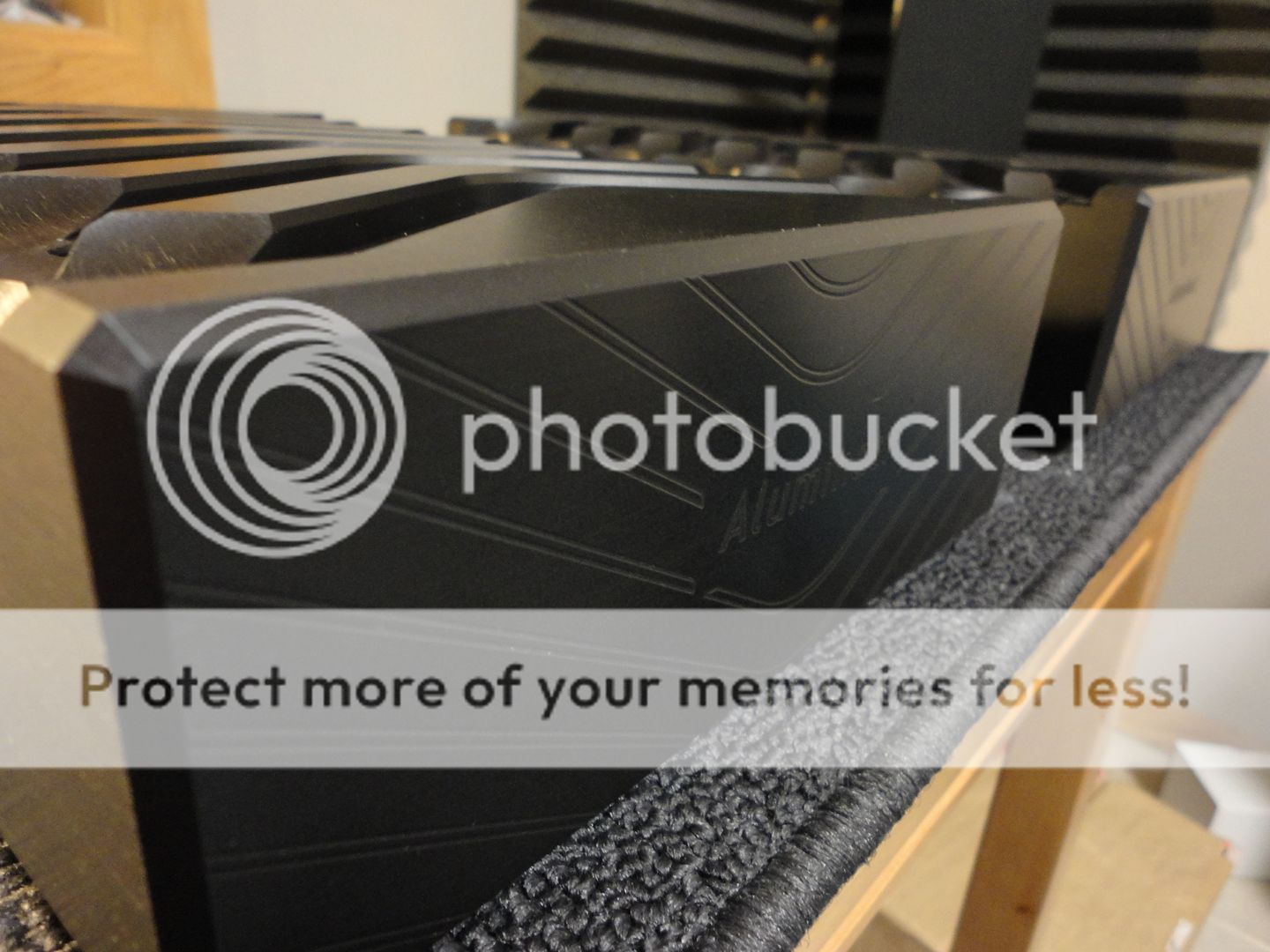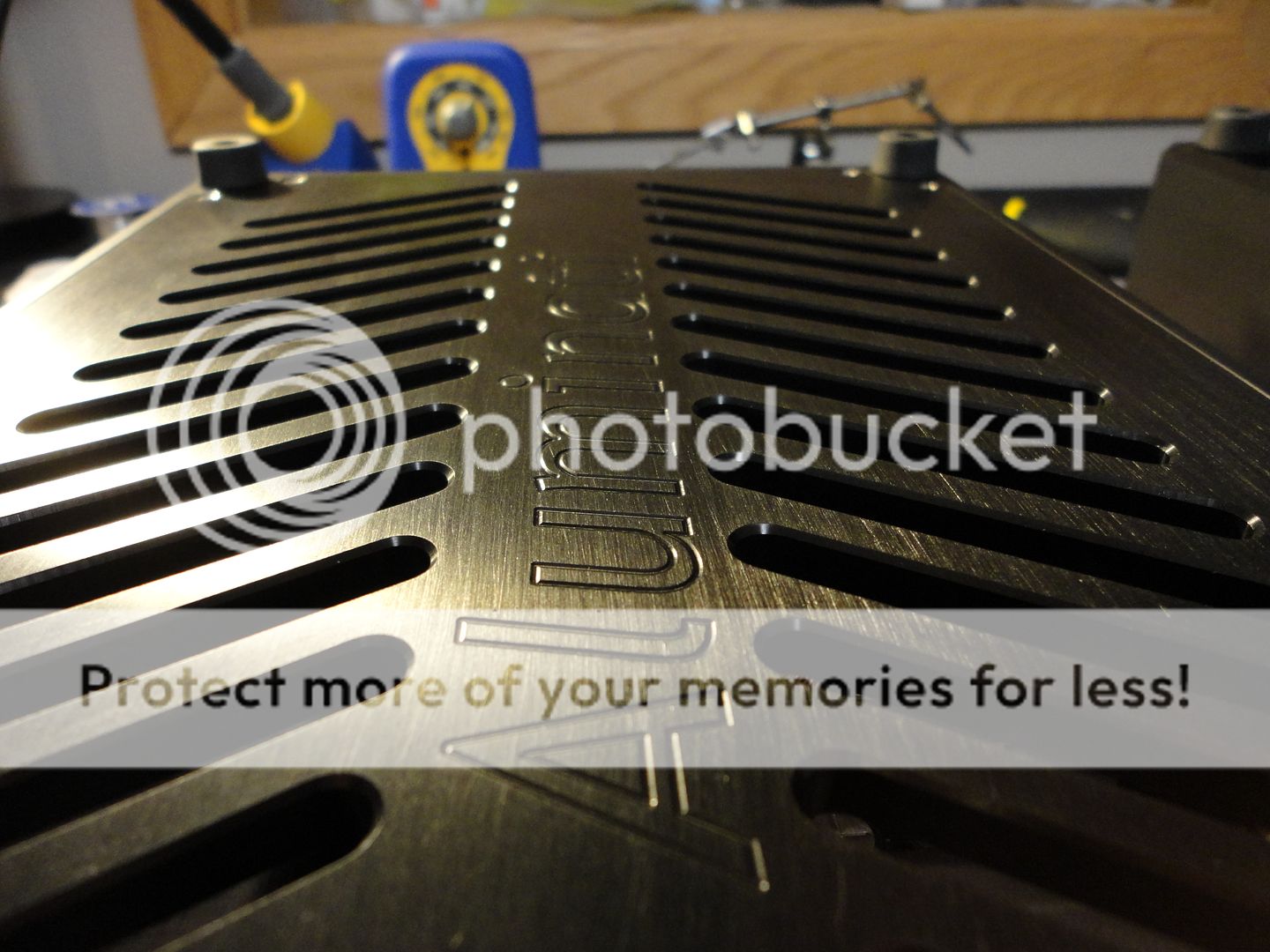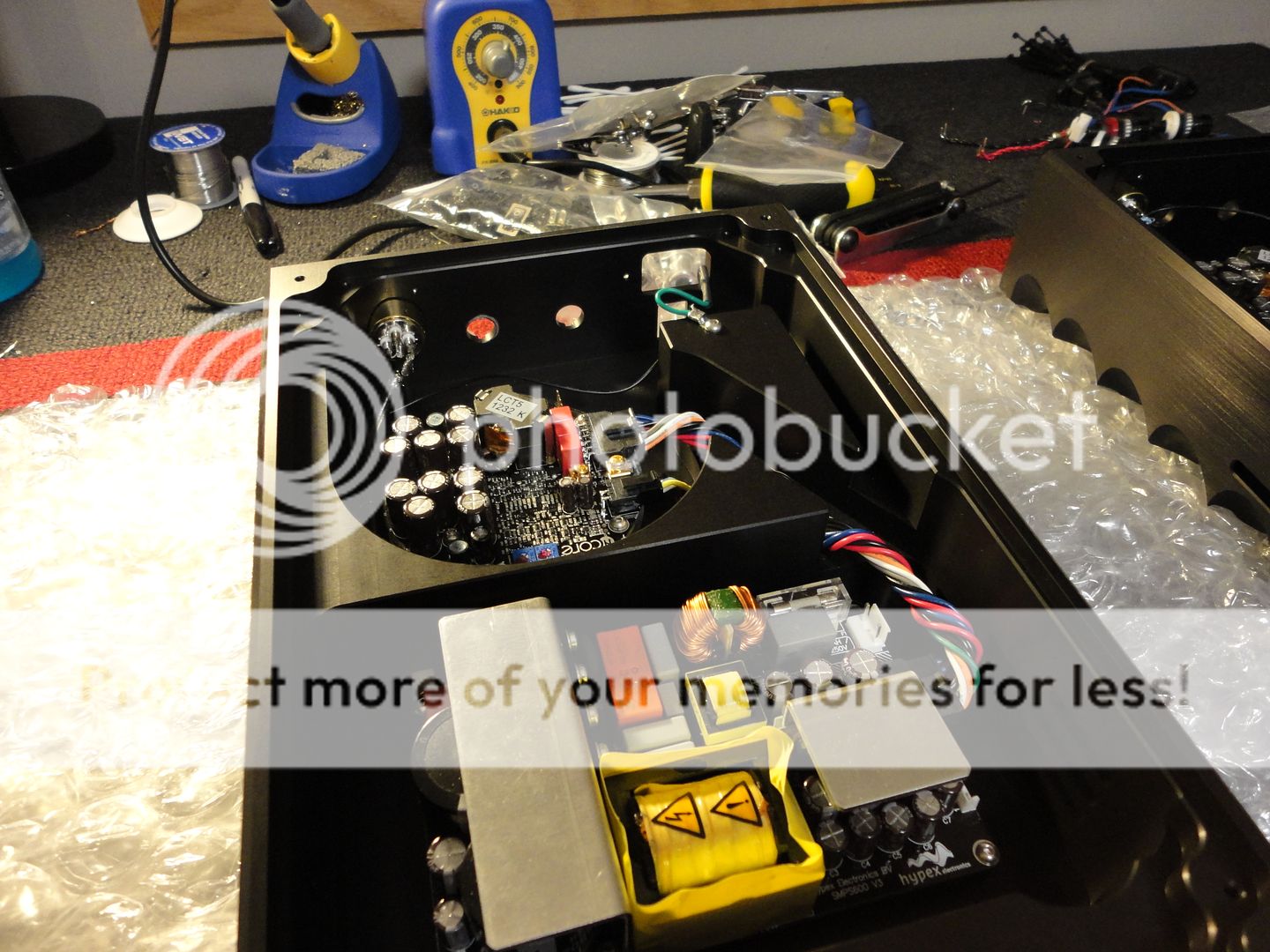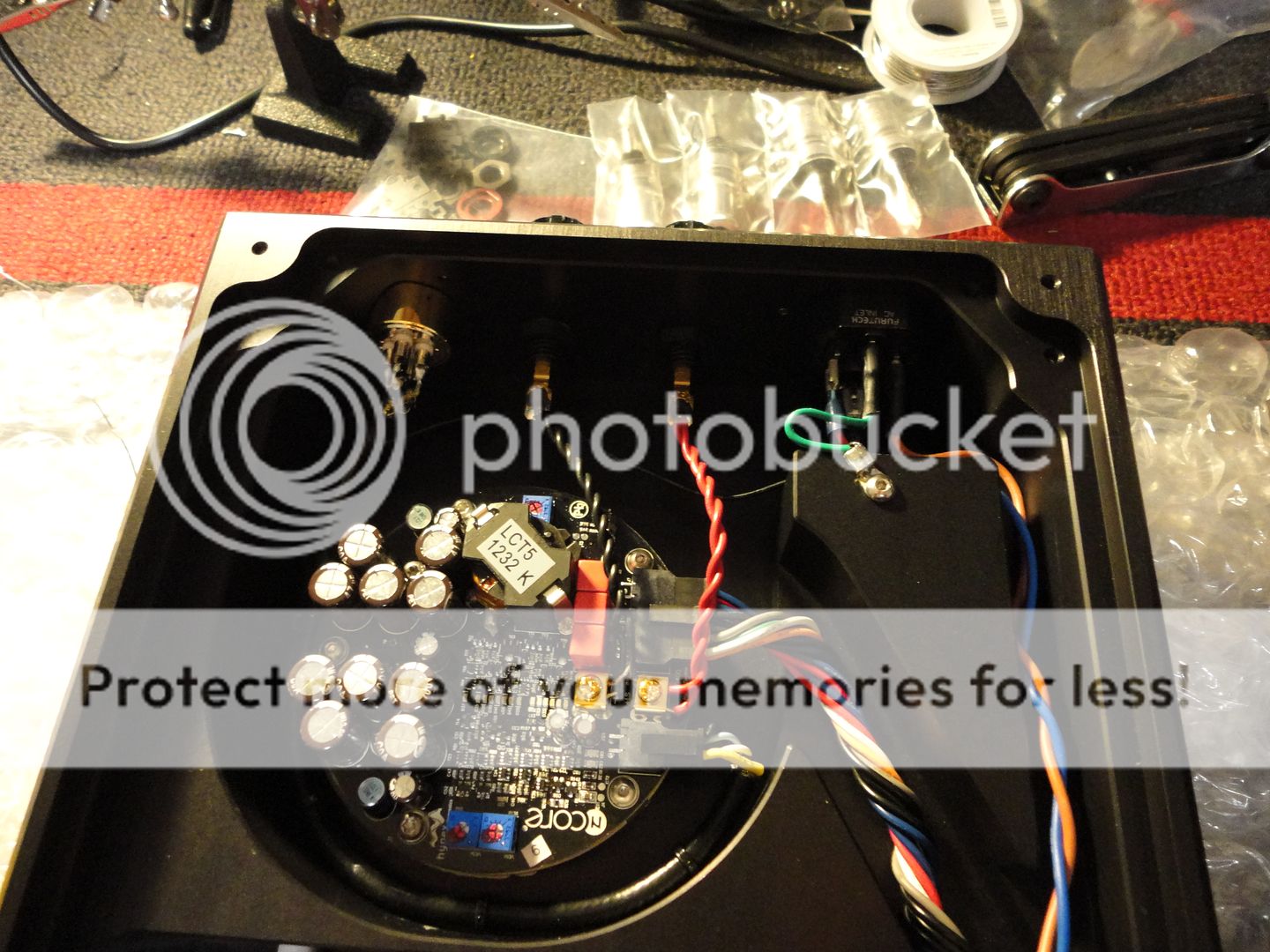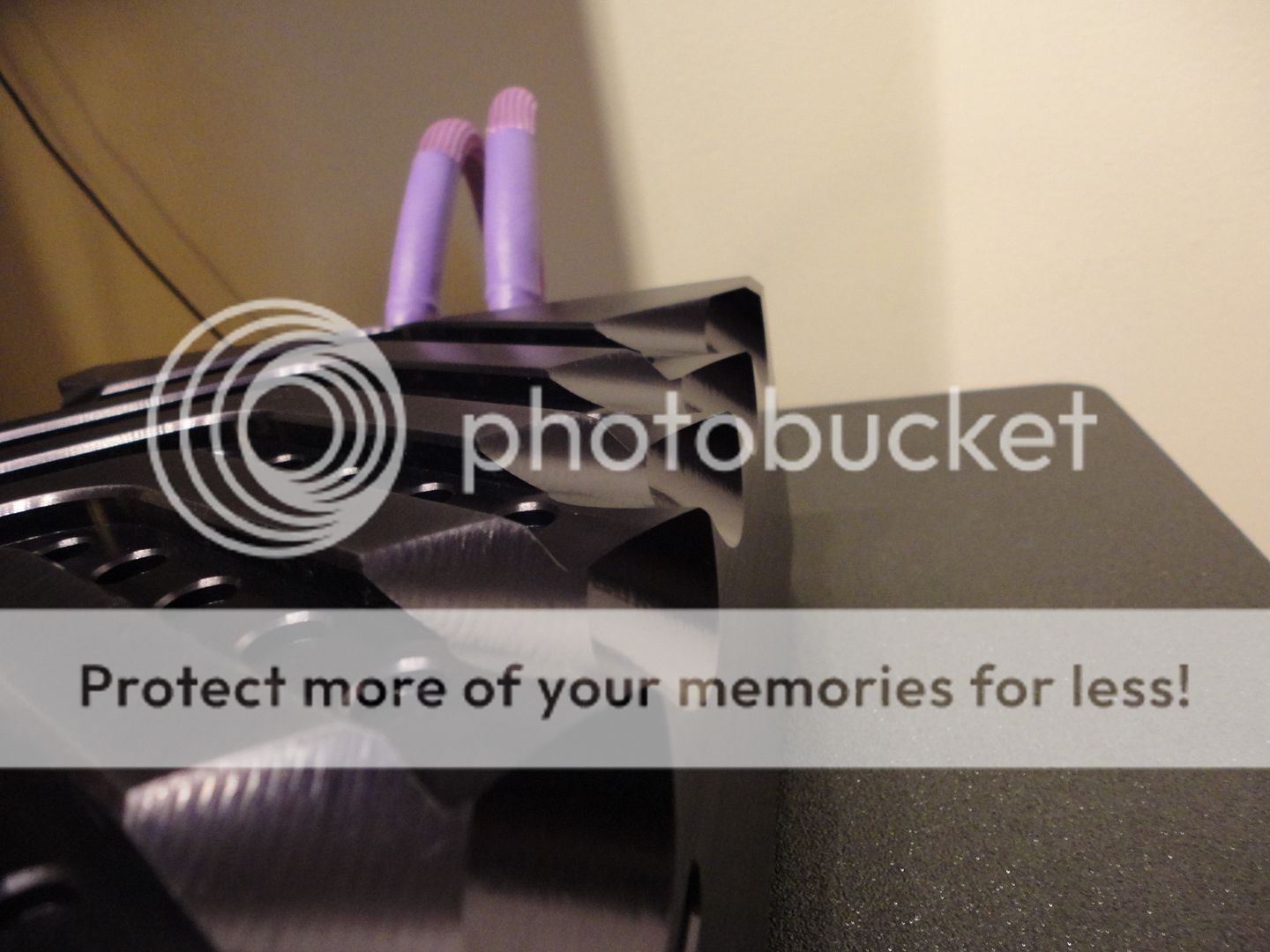Don't you had read: "Attached, bandwidth curves of the same amplifier took inside the loop (input of the second stage)" ?
Those pictures are measuring the signal just after feedback substration.
I'm sure qusp or mr_push_pull will provide the same kind of measurements with their Ncore. They are not common, but interesting as they reveal a lot about open loop bandwidth and poles.
The bandwitch of those amps are flat at the output, up to 1Mhz for the voltage feedback version, 5 Mhz for the current one, of course and as indicated.

ah - okay I got it - that was just the open loop response without any feedback?
Now the feedback signal is typically sampled at a very high frequency, isn't it?
I remember Spectron advertising that they used ~2MHz sampling for the feedback path.
Does Ncore use a similar rate?
And also, at the end of the day, if the total closed loop response is flat in the audio bandwidth, then I am curious, does it matter what the open-loop response is? Was that the concern regarding transit intermodulation?
No, it shows the result of the [signal - feedback] in the closed loop.ah - okay I got it - that was just the open loop response without any feedback?
When the gain of the amp begin to fall in the treble, because the overall gain of VAS+driver+power stage decrease, the phase turns, so the resultant signal input-feedback begin to increase.
It compensate the losses, so the output remain flat until the input stage arrive at its limits. The difference between the 2 topolgies is mainly due to the pole added in serial to the feedback by the inverting input in voltage feedback, while the common base mode used in current feedback is a lot faster.
But we are too far from Ncore, here, and, i'm afraid, a little out of topic.
I wanted to show that, even with amps faster than Ncore (and other class D amps, 5~7 Mhz vs ~60Khz) we are far from an ideal constant feedback ratio in all the audio bandwidth.
BTW: Looking to white papers of Bruno to find more datas about Ncore, and to conclude about the previous controversy with mr_push_pull (or qusp), i was happy (and not surprised 🙂 to read, under Bruno's signature:
"The loop gain plot bears closer resemblance to that of a sigma-delta modulator than to that of an amplifier".
but you still seem to think that makes it digital … which is the confusing part
you cannot have 'almost digital' especially since its just the input stage anyway and but one type
I dont own an NCORE, I use high bias AB, so i'll have to bow out of your **** measuring contest, i'm just trying to stop the ongoing and long standing confusion of class D being digital spreading further.
you cannot have 'almost digital' especially since its just the input stage anyway and but one type
I dont own an NCORE, I use high bias AB, so i'll have to bow out of your **** measuring contest, i'm just trying to stop the ongoing and long standing confusion of class D being digital spreading further.
Last edited:
A couple of years ago I played with a simulation of the original, core technology from Philips - fascinating stuff! It most certainly is analogue behaviour, meaning that tiny fiddles here and there alter what comes out every time - the digital cap is never in sight ...
who said there's any sampling going on?...sampling for the feedback path...
Does Ncore use a similar rate?
one more try. not that I expect direct persuation to work, it rarely happens.BTW: Looking to white papers of Bruno to find more datas about Ncore, and to conclude about the previous controversy with mr_push_pull (or qusp), i was happy (and not surprised 🙂 to read, under Bruno's signature:
"The loop gain plot bears closer resemblance to that of a sigma-delta modulator than to that of an amplifier".
if the switching moments of the output transistors were fixed in time, only possible at discrete moments, it would be a digital amp. but they are not, the transistors are switched on and off whenever needed, there are no quanta.
what you're getting at is finite resolution, meaning there's a limit to how precisely you can encode a variation of voltage and/or frequency. this applies to A/D and D/A converters (in a way). meaning that you cannot encode voltage/time variations below a certain limit. the maximum temporal resolution of an ideal A/D or D/A converter is given by 1/(sample rate times 2 raised to the number of bits). which means ~0.34 nanoseconds with RedBook. maybe it doesn't seem intuitive, but if you stop and think a bit, it makes sense. that in no way should imply that a RedBook-capable converter has a 3GHz (1/0.34ns) bandwidth. if anyone thinks that, any further discussion is an exercise in futility.
but is it so with a class D amp?
think of a simple, feedbackless, ideal voltage to PWM converter. an ideal comparator fed an ideal triangular wave at one input and the signal at the other, which turns an ideal switch on and off, which is followed by an ideal low-pass filter (integrator). so you have no imposed limit (other than those of implementation, competence etc) on the moments when you can switch the comparator's output from one state to the other. any change in input voltage, no matter how small, will make the output of the comparator change state at a different moment, which will be visible at the output, after low-pass filtering.
the same applies for frequency and here you'll understand the relevance of vertical (voltage) resolution to frequency/time resolution. with an A/D converter, if you stretch the input waveform ever so slightly in time (below the temporal resolution calculated above), it will be sampled just the same, provided there is no noise (regardless if it's intentional=dithering or not).
but not so with a class D amp. any time-domain stretch of the waveform, no matter how small, will make the output of the comparator switch a a different moment, which will cause a change in the PWM waveform, which will cause a change at the output.
and what about oscillator frequency, it is finite, isn't it? yes, it is, but so what? no one-said that you're supposed to pass signals of infinite frequency, just as no "analog" (note the quotes) amp has infinite bandwidth.
ah, but you used a lot the word "ideal", mr_push_pull, got you! yeah, but since when are the "analog" amps free of imperfections of equivalent nature?
and if it's not enough, this is from the man himself:
The Truth About Digital (Class D) Amplifiers | Audioholics
http://www.diyaudio.com/forums/clas...en-class-d-digital-amplifiers.html#post635641
http://www.hypex.nl/docs/papers/AES124BP.pdf:
Digital amplifier” is an oxymoron
• Voltage, current and time are physical quantities (analogue).
of course there's a limit to how fast you can correct an error at the output by means of feedback but... wait a minute. others established that it applies to "analog" amplifiers too.
but it's time to ask: what is the exact point in establishing the "digitalness" of this specific class D amp we're discussing here? presuming it's not about this:
Considering the compression and removal of most harmonics with digital recordings
...which would make me a prophet:
but saying class D is digital feeds the incorrect understanding of others
Last edited:
good post Mr PP
yes, this part from Bruno was something I meant to bring up before too.
even if the events could be instantaneous on and off (which they cant) that in itself doesnt make the process or signal digital. digital implies there is an ideal signal encoded/represented by the electrical signal that can be reproduced/refreshed perfectly as long as the error in the electrical/analogue transmission isnt enough to make the symbol/encoding unrecognisable
yes, this part from Bruno was something I meant to bring up before too.
Bruno Putzeys said:"What? You can't just look at a signal and see if it's digital?"
No. The distinction lies in who receives the signal, not in what the signal itself looks like.
Re-read the above sentence. It's the most important sentence in this whole post. Never confuse form with content. In digital signals, form and content are two entirely different domains. In analogue signals, form and content are inextricably intertwined.
even if the events could be instantaneous on and off (which they cant) that in itself doesnt make the process or signal digital. digital implies there is an ideal signal encoded/represented by the electrical signal that can be reproduced/refreshed perfectly as long as the error in the electrical/analogue transmission isnt enough to make the symbol/encoding unrecognisable
and for more funny math, if you get to think about it, there's a finite number of different tunes you can encode in digital. even for hi-res (24/192) there are about 2 followed by 8 billion zeroes of different tunes possible. turns out that if you want infinite creativity you must go analog LOL
Hmmmmm,
Quiet overhere.......... Two weeks without a new reply?????
Being the OP, I'm very well chuffed to see that this thread is still alive. I would like to see more pics of builds though.
😀
Nice build, but your speakerwires are wrong! They should be twisted together!
According to Bruno (via personal email with him) this was not required. I did not hear a difference in SQ with them twisted or un twisted. Plus all that aluminum likes to soak up any interference 🙂
Matt
That is awesome! This seems to be the amps I found on YouTube.
They are the same!
Absolutely beautiful... Don't care for the green ground interupting such a flawless execution but that is absolutely trivial.
Gorgeous build.
Gorgeous build.
here's what the manual states:According to Bruno (via personal email with him) this was not required. I did not hear a difference in SQ with them twisted or un twisted. Plus all that aluminum likes to soak up any interference 🙂
Matt
It is very important to use twisted pairs for the output cabling, at the very least anywhere near the PSU cabling. The distortion of the NC400 is so low that it is easily exceeded by magnetic coupling between the supply wiring and the audio wiring.
Pictures from Bruno's showcase for NC400 and NC1200 show he uses twisted pairs!
Sorry, but it's hard to believe he suddenly changed his mind about it and told it only to you ...
here's what the manual states:
It is very important to use twisted pairs for the output cabling, at the very least anywhere near the PSU cabling. The distortion of the NC400 is so low that it is easily exceeded by magnetic coupling between the supply wiring and the audio wiring.
Pictures from Bruno's showcase for NC400 and NC1200 show he uses twisted pairs!
Sorry, but it's hard to believe he suddenly changed his mind about it and told it only to you ...
Cool beans 🙂
Twisted or not twisted. It sounds good either way.
I would hate to have you own these since there so inferior to others 😉
Twisted or not twisted is sort of like wearing your seat belt in a car. 99 % of the time it's not needed, but when it is needed it's to late to go back and get it.
Aha, now i know why the manual says that it's "very important to use twisted", cause it sounds good either way!Cool beans 🙂
Twisted or not twisted. It sounds good either way.
I build mine just like Bruno recommends and definitely don't need your overpriced cases.I would hate to have you own these since there so inferior to others 😉
- Status
- Not open for further replies.
- Home
- Amplifiers
- Class D
- Hypex Ncore

